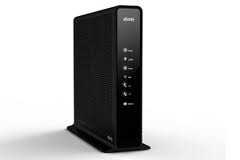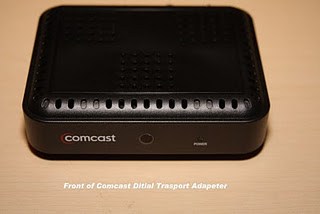 Time Warner Cable experienced another challenging quarter, continuing to lose cable TV customers who either drop or pare back their television service, often in favor of broadband.
Time Warner Cable experienced another challenging quarter, continuing to lose cable TV customers who either drop or pare back their television service, often in favor of broadband.
The company reported losses of an additional 128,000 video subscribers during the third quarter, but is partly winning that revenue back with new broadband customers — 89,000 of them in the last three months.
“Broadband is a powerful service for which there appears to be unquestionable consumer thirst,” Time Warner Cable CEO Glenn Britt said on the investor call. “Over time, we will contribute more of our plant’s capacity to broadband.”
The company is also poised to expand its marketing to win new broadband customers away from their primary competition — telephone company DSL service. Company officials remain confounded by customers who subscribe to Time Warner’s cable TV service and take broadband from “inferior” phone company-delivered DSL. Time Warner will continue to target these customers with win-over promotions offering a year of Road Runner Standard Service at the $29.95 promotional price point.
For the company as a whole, this is the tenth consecutive quarter of year-over-year residential broadband revenue improvement, coming from a combination of higher-priced, faster speed tiers, price increases, and subscriber additions. The company’s DOCSIS 3 upgrade has proven itself a winner for customers and the company, with 18 percent of Time Warner subscribers now choosing 30 or 50Mbps broadband services.
Wall Street expressed some concern about statements from CEO Glenn Britt that the company was going to expand capital spending on broadband to handle increasing demand, especially from online video. That concern comes despite the fact the company’s “capital intensity” (spending) from January-September was the lowest in the history of the company. The full year’s capital spending is on track to reach up to $3 billion, which is consistent with what the company spent last year.

Glenn Britt
So despite the plans to spend more on broadband, that spending is actually in line with previous years.
In response to an opening question from Deutsche Bank’s Doug Mitchelson, Britt delivered an extended explanation downplaying the company’s spending plans:
In a way, there’s nothing really new here. I think you’ve seen this trend for a while. Our broadband product is very strong.
As most people know, the usage of broadband is skyrocketing, as it has been for some time. And that means that we will need to spend more money on it. We have been already, both in capital and operating expenses.
The great thing about the Internet is lots of third parties dream up lots of new applications that require more speed and more bandwidth. And we anticipate that we’re going to have to devote more capacity to that over time. We will do that by gradually removing our analog signals from our — analog TV signals from our plan. We’ve been doing that over the last several years by migrating to digital using Switched Digital technology. And over the next several years, we’ll be going all digital in the TV space.
I don’t see this driving a dramatic change in our cap spending, I think, to the core of your questions. The spending has been going on for a while, and I think you’re seeing a change in mix. The video spending is going down over time. The business services is going to go up, although it didn’t this quarter. And you’re going to see the spending on broadband going up. But I don’t think the overall trajectory is mutually different.
This quarter, the company’s conference call seemed to embrace greater broadband usage, and pondering Internet Overcharging schemes like usage caps or usage-based billing never came up. But Richard Greenfield from BTIG alluded to usage in his questions to Rob Marcus, president and chief operating officer at Time Warner Cable.
“I think we’re somewhere in the 7GB a month [range] of downstream bandwidth on a median basis,” Marcus said. “The average is much higher given the disproportionate usage by our high-end users.”
There were plenty of other facts to be gleaned from this morning’s conference call:
 TV
TV
- Whole Home DVR service has been introduced nationwide. In the coming year, Time Warner will begin deploying “home gateways,” which reduce equipment costs;
- Time Warner is testing improved cloud-based set top boxes with home networking capabilities in parts of Syracuse, Los Angeles and Dallas. These boxes will expand across the country in 2012. They offer better search capability and deliver an improved user experience;
- 60% of customers reject “triple-play” offers from Time Warner and choose either “single” or “double-play” service instead;
- Much of Time Warner’s revenue growth is coming from rate increases on programming, services, and equipment;
- TV Essentials, the smaller, less expensive video package, is now available in New York City and Northeast Ohio, as well as upstate New York. It will launch nationwide by year end. Unsurprisingly, company officials admit the less-than-attractive channel lineup has resulted in the vast majority of customers calling about the offering taking the traditional video package instead;
- Customers continue to drop ancillary services to cut their cable bill. The increasingly expensive DVR box is a new target for cutting, and premium movie channels, adult pay-per-view, and mini-pay services all continue to suffer significant declines in business;
- The Google-Motorola deal will likely have little impact on Time Warner’s set top boxes, which primarily come from Cisco and Samsung.
 Broadband
Broadband
- By the end of the year, Time Warner plans to offer an Android-based TV Everywhere application similar to the existing iPad application, which will also continue to be upgraded to include on-demand offerings;
- Time Warner will make their TV Everywhere service available on game consoles, smart TVs and PCs in the near future;
- New York City customers will soon be able to select from a range of local broadcast stations on the company’s iPad app. Other markets will start to see local channels added to this app in 2012;
- Major parts of Time Warner’s capital investments this year are: building data centers in Charlotte and Denver, conversion to all-digital in Maine to make room for enhanced broadband, and the continued rollout of DOCSIS 3.0. The company is also continuing to spend significantly on wiring commercial buildings to sell services to business customers;
- TV Essentials customers will soon be offered a “lite user” slower speed discount broadband plan to accompany their video package;
- In Los Angeles, Wideband 50Mbps customers also get 2 gigabytes of 4G/3G mobile broadband for no additional monthly charge on the company-branded Clearwire service. For Turbo Plus and Wideband 30Mbps customers, they can get the same 4G/3G capability for an additional $10 a month. Standard and Turbo customers can get it for an extra $20. The company’s mobile broadband add-on product has not enjoyed much success with paying customers, however. Time Warner hopes the value-added bundling of mobile broadband will attract more interest.
 Phone
Phone
- Cord-cutting is now impacting Time Warner “digital phone” service, too. Customers are increasingly reluctant to purchase phone service from any landline provider. Now Time Warner’s regular pricing is starting to cost them business. Executives revealed Time Warner’s “digital phone” service costs the company $9.06 to provide. They charge consumers $30. With that kind of profit margin, the company admits it will have to get more aggressive in pricing to attract new customers (and potentially keep existing ones);
- Time Warner lost 8,000 residential voice line customers last quarter, cushioned by net additions of 13,000 business line customers;
- The company continues to show little interest in selling cell phone products or services, either owned by themselves or others. Mobile data remains an exception.
 Providers establishing Internet Overcharging schemes like usage caps, so-called “consumption billing,” and speed throttles that force subscribers into expensive upgrades are planning for a growth industry in data consumption.
Providers establishing Internet Overcharging schemes like usage caps, so-called “consumption billing,” and speed throttles that force subscribers into expensive upgrades are planning for a growth industry in data consumption.

 Subscribe
Subscribe










